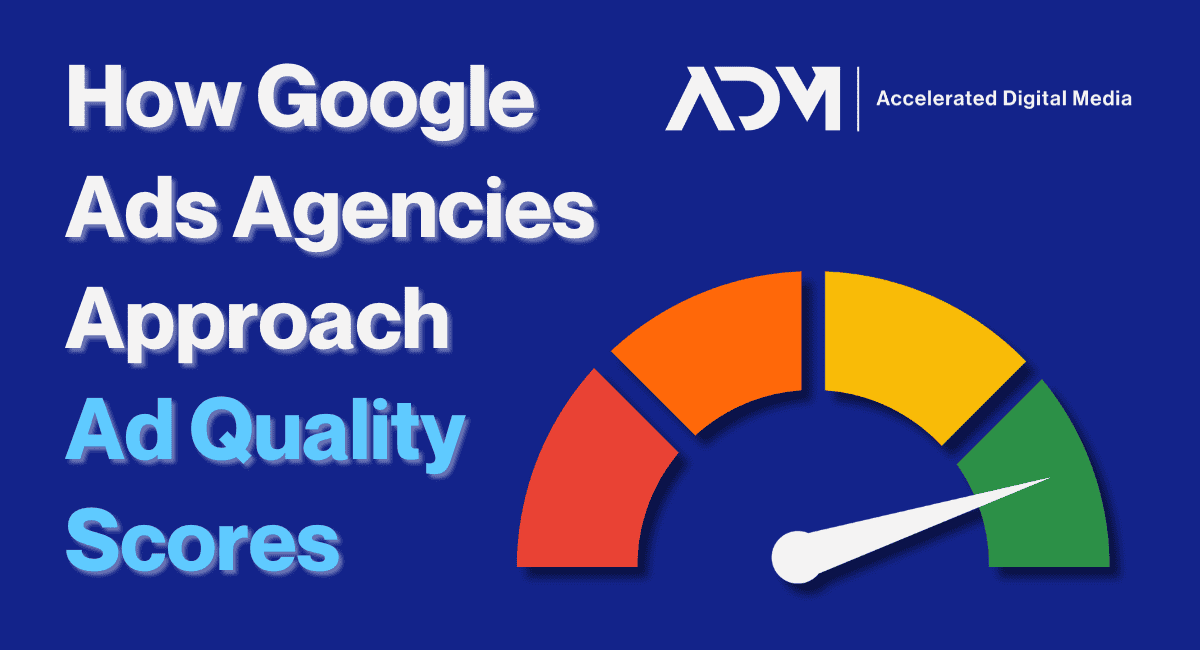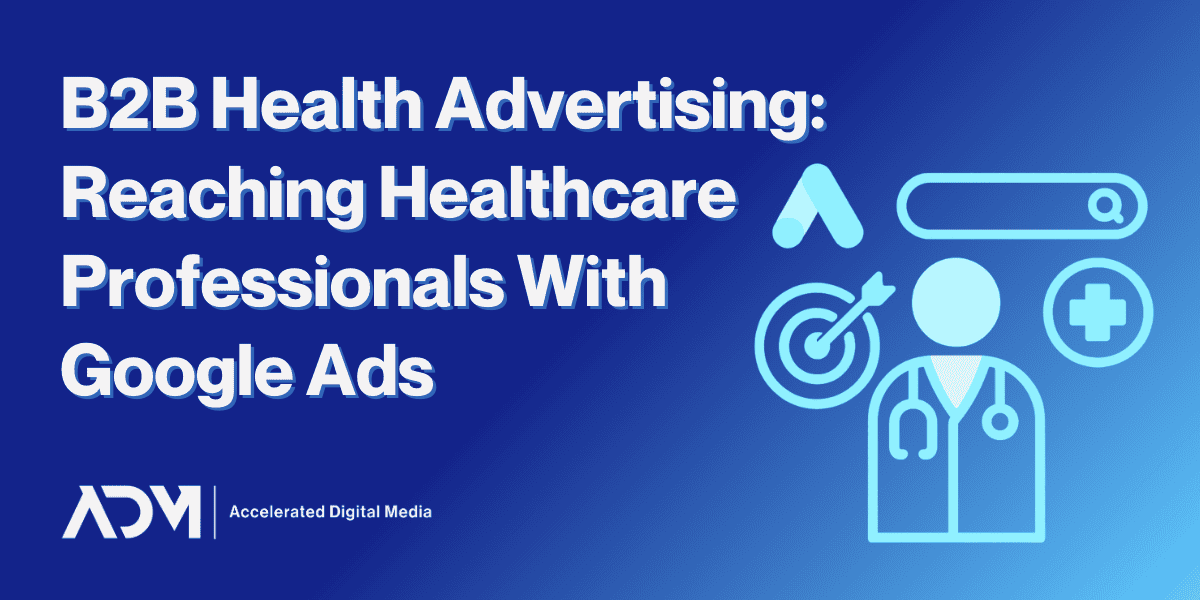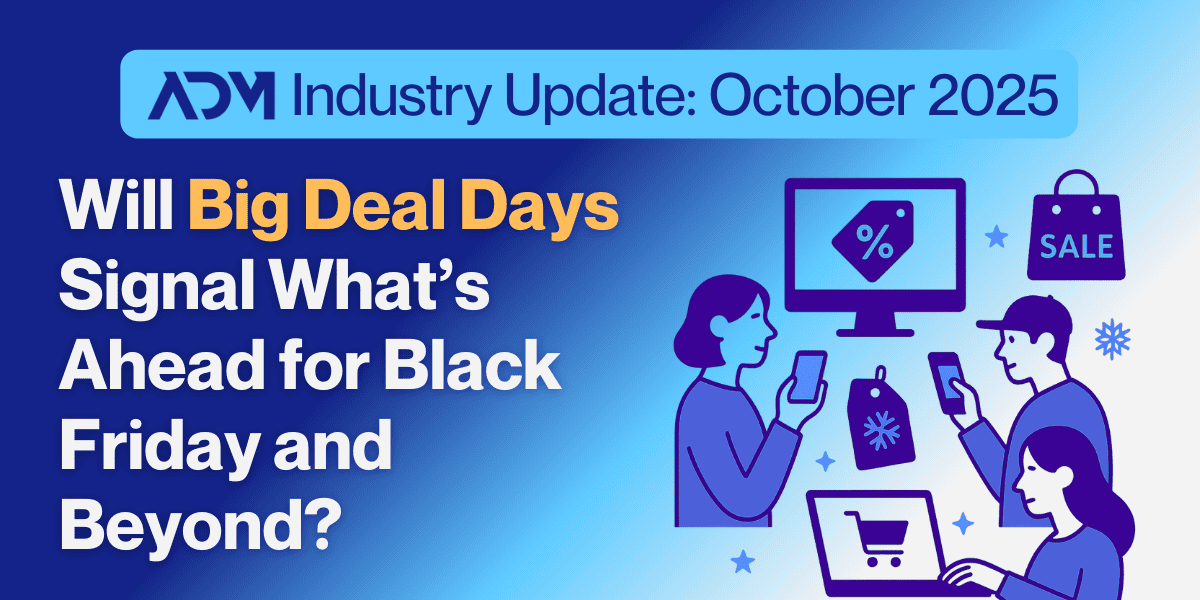Whether your paid search ads succeed or not depends on countless factors. But when diagnosing ad performance issues, one of the tools that paid search specialists often look to is the Google Ads Quality Score. If you’ve heard your Google Ads agency explain that your ads aren’t performing because these scores are too low—or that you need to change your website to improve them—they could be onto something. Or, conversely, they might be spinning your wheels.
It’s possible for two things to be true at the same time: On one hand, Quality Scores are important and can influence ad performance. But just improving those scores might not be the be-all-end-all for improving your paid search program—and there are times where your score might be low even when the ads are working as intended.
In this blog, we’ll run through the basics of Quality Score and explain how we look at it from an agency perspective.
What Determines Your Google Ads Quality Score?
Google calls Quality Score “a diagnostic tool meant to give you a sense of how well your ad quality compares to other advertisers.” It’s determined by three factors:
- Expected Clickthrough Rate (CTR)
- Ad Relevance
- Landing Page Experience
Each component is rated as “Above average,” “Average,” or “Below average” compared to other advertisers for the same keyword over the last 90 days. Based on those unique component ratings, each ad is then scored on a scale of 1-10. A higher Quality Score indicates that your ad and landing page are more relevant and useful to users searching for your keywords.
There isn’t official word from Google about how much weight each of its three factors hold, but some SEM researchers have found that Ad Relevance is typically the biggest determinant of Quality Score.
Impact of Low Quality Scores
Low Quality Scores carry a number of negative implications for your marketing, including:
- Poor ad rank: Low Quality Scores mean ads will rank lower on the search engine results page (SERP), which hurts ad visibility. Since the entire goal of running Google Ads is to be seen and clicked on by more potential customers, you obviously don’t want that.
- Higher CPCs and lower ROAS: Google rewards strong Quality Scores with lower cost-per-clicks (CPCs). If your keywords do not score well, you need a higher bid to enter auctions and maintain ad visibility. Once again, no one wants that—it means you’re spending more to get less. Unless your conversion rate (CVR) is strong enough to offset those click costs, you’ll face a reduced return on ad spend (ROAS).
- Less Ad Extension Visibility: The numerous Ad Extensions available in Google Ads—like sitelinks, callous, snippets, and image extensions—are a huge benefit for advertisers. But if your Quality Score is too low, Google will be less likely to display all of the extensions you’ve built out.
The Most Common Causes of Low Google Ads Quality Scores
Because Quality Score is based on three factors listed above, poor scores will be a result of…not addressing the three factors listed above!
Poor ad relevance is a result of ads that don’t align with the keywords they’re tied to. Either your ad copy is too generic or it’s just outright mismatched to the keyword. This can be caused by:
- Poor ad group structure
- Redundant/duplicated ad copy (a common problem with paid search agencies that rely on copying/pasting rather than tailoring each campaign, ad group, and ad individually)
- A lack of negative keywords, which can confuse Google’s algorithms into thinking that what you’re saying and what you’re bidding on are unrelated.
Low expected CTR will result from no one clicking on your ads in the past. That may be another outcome of poor relevance, or maybe the language just wasn’t all that appealing. Low historical CTRs can result from:
- Unappealing ad copy
- Mistakes in ad copy
- Not enough ad copy testing to find your most appealing language
Poor landing page experience takes the onus off your Google Ads team and onto your web developers. It can stem from factors like:
- Slow load times
- Pages that are not optimized for mobile
- Low-quality content
- High bounce rates as a result of things like broken links, confusing navigation, and lack of secure payment options
How We Help Clients Improve Ad Quality Scores
Based on the issues outlined above, here’s what ADM does to help our clients achieve better quality scores:
- Focus on tightly-themed ad groups. While we want to avoid oversegmenting ad groups, having customized ad copy and relevant landing pages per ad group helps with Ad Relevance scores
- Include top-performing keywords in ad copy or use Dynamic Keyword Insertions (DKI) in ads, to boost ad relevance and CTR.
- Work with clients to assess landing page performance, prioritizing fast laid times and strong bounce rates to prevent poor Landing Page Experience scores
- Stay up-to-date on Search Term Reports to exclude irrelevant queries, which improves Ad Relevance score
- Continuously test new ad copy to replace poor performing assets in order to increase CTRs. Since Expected CTR is based historical CTRs, the impact here isn’t always immediate (you need to build a history, first). But the result of all this testing is typically improved performance over time.
How Important is Quality Score Really (or: Are Mediocre Scores Ever OK?)
Quality Score is important. But it’s best viewed as a health indicator, not an actual KPI. At our Google Ads agency, we aren’t focused on achieving high Quality Scores over other performance metrics. But there are times when a mediocre Quality Score isn’t actually evidence that something is wrong.
For example, conquesting campaigns are inherently going to have poor Quality Scores since our ads are bidding on a brand keyword but displaying another brand’s website. But conquesting is still a worthwhile strategy, so the scores don’t deter us from running this type of initiative: we are focused on actual KPIs.
Likewise, new product launch campaigns are not going to have historical data—meaning your ads won’t be able to show a strong expected click-through rate and Google will have fewer insights on landing page performance. But obviously, you’ll still need to run ads for those new products.
And B2B campaigns typically get lower Quality Scores than B2C ones. That’s because they typically suffer from lower search volume and will often feature industry-specific terms that Google might not have enough data on to fully understand. B2B advertisers may need to target more general keywords to get enough volume, but need niche copy to acquire qualified clicks—though this can impact Ad Relevance scores. It’s all a balancing act, after all.
In these instances, we’ll still be monitoring Quality Score—but we keep things in perspective to focus ultimately on the client’s goals.
When is a Quality Score Too Low?
Scores below 5 are considered below average, with 1-3 being very low. While fluctuations are normal, scores of 3 or lower should be addressed immediately to avoid performance and cost inefficiencies. Keywords with scores of 4-5 present optimization opportunities but may not require urgent attention.
Getting Help With Your Google Ads Strategy
So, how much stock should you put into Quality Score? That’s up to you: While not a standalone KPI, maintaining strong Quality Scores can reduce costs and improve visibility. But it might not be worth chasing 8s and 9s under the Quality Score column if it’s just for vanity or results in diminishing returns.
If you’re looking for a smart, experienced Google Ads agency that always keeps the focus on your business goals and bottom line, reach out to our team today. We conduct comprehensive audits to assess the overall success of your current strategies and provide helpful insights into how you can improve your efforts.




